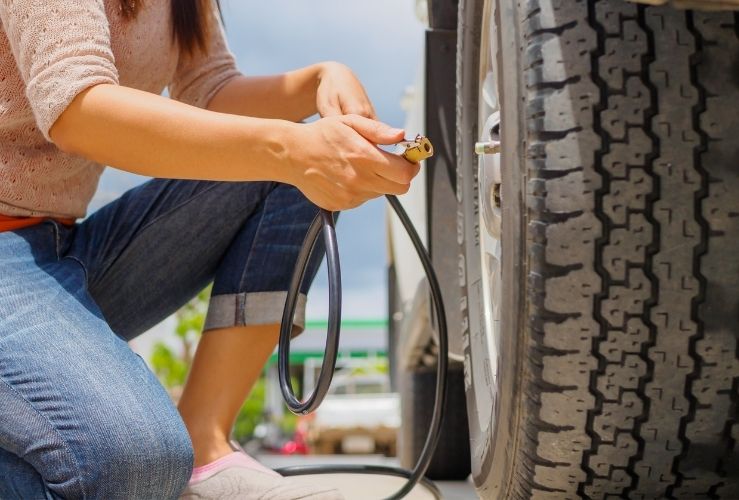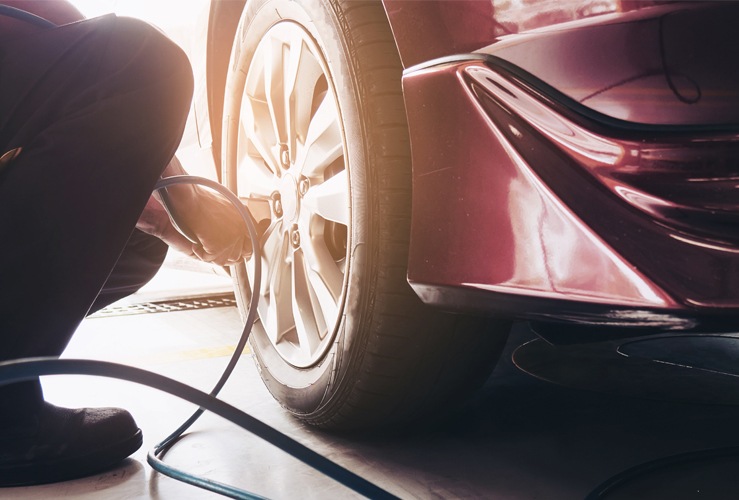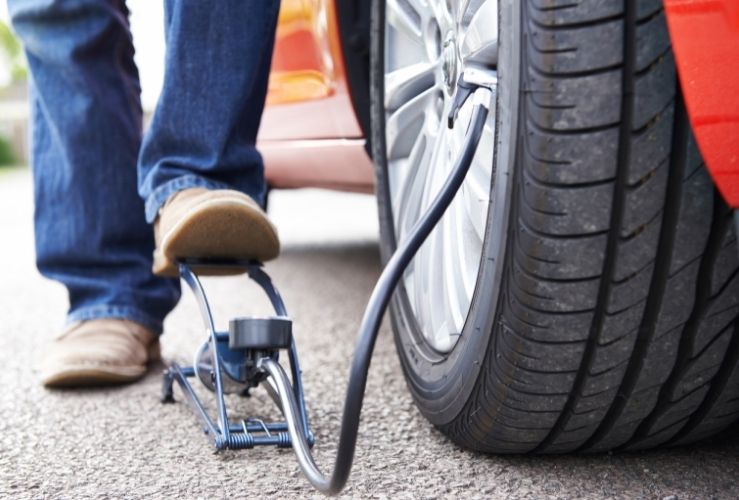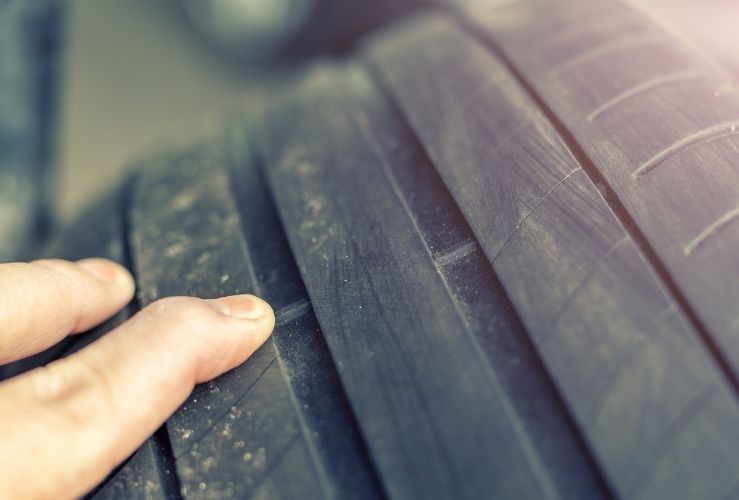Keeping your tyres at the correct pressure is important for safety, comfort - and saving you money in the form of premature tyre replacement.
Here’s how to check your tyre pressure...
According to a roadside survey by Sussex Police Force in 2015, 73% of checked cars had incorrect tyre pressures.
Why is it important to have the right tyre pressure for my car, van or bike?
Your vehicle's tyres should be inflated to the correct pressure in order to:
- Ensure a smooth ride
- Reduce fuel consumption
- Prevent your tyres from wearing out prematurely
- Help keep you safe on the road
Having the correct tyre pressure maximises your tyres' ability to deal with different road surfaces, and the twists and turns of everyday driving.

Measuring your tyre pressure: Warm and cold tyres
Before we cover how to check tyre pressure in more detail, it’s good to note that it's 's best to check pressure levels when the tyres are cold.
This is because the recommended tyre pressure is for cold tyres.
You can still check your tyre pressure when the tyres are warm, but if you add air to them, remember to reduce the target pressure a little. This is because warm air expands.
Where can I find the correct tyre pressures for my vehicle’s tyres?
Wondering what should my tyre pressure be?
You'll find the recommended tyre pressure printed on a sticker in a door frame, or in the filler cap. Failing these, you'll certainly find the tyre pressure information in your vehicle's manual.
Pressure levels will be marked in bar or PSI (pounds per square inch).
Different tyre pressures needed?
Note that front and rear tyres may require different tyre pressures.
Also remember that the required pressure relates to the specific tyres you have - so if these have been changed for different types you'll need to find the right pressure levels.
Different tyre pressures may be shown for heavy loads and light loads.

Digital air dispensers
You'll find digital air dispensers for carrying out a tyre pressure check in many fuel stations.
There should be usage instructions on the pump. However, they are straightforward to use.
Simply park your vehicle near the pump, so the chuck can reach the tyre. Make sure the handbrake is applied and the engine is turned off.
Then unscrew the dust cap and keep it somewhere safe. Simply attach the chuck to the tyre valve and enter the desired pressure on the pump machine.
Digital dispensers measure the current tyre pressure, then either deflate or inflate the tyre as required. There should be a loud beep when the machine is finished.

Manual-style air dispenser/gauge
Manual-style gauges for checking tyre pressure are not quite as easy to use as their digital counterparts, but their operation is still straightforward.
To check your current tyre pressure, firmly hold the chuck against the valve.
A hissing noise means you’re letting air out - so hold the chuck down with more force. Then view the current pressure.
If you need to add more air to your tyres, press the chuck down on the valve, while pressing the gauge trigger. Let go of the trigger to check the current air pressure.
When you’ve reached the required tyre pressure, disconnect the pump and re-fit the dust cap.

Home pressure test/inflation machines
You can also buy your own air dispenser for home use.
These machines work in a similar way to a digital dispenser at your local fuel station; simply set the tyre pressure to the recommended level.
Unscrew the valve cap and firmly attach the air pressure gauge/pump to the valve. The chuck will either clip into place, or require screwing.
The machine will then display the current pressure, before adding more air if required - or removing air if the tyre is over-inflated.
You can also buy separate hand pressure gauges which only measure tyre pressure.
You can then use a pump to inflate or deflate as necessary.
Spare tyre?
If you have a spare tyre, make sure this has the correct pressure too. You never know when you might need it.
Note that tyres naturally lose some air pressure over time, so it’s important to check your tyre pressure periodically.
If your tyres are losing pressure quickly, you may need new ones.

Don't over-inflate your tyres
Over-inflating your tyres could lead to a blow-out - putting yourself and other road users and pedestrians at risk.
How to decrease air pressure in tyres manually?
If you do over-inflate your tyres, deflate them by pressing the pin inside the valve.
You can use your thumb nail, car keys, or even the edge of the dust cap.
You’ll hear a hissing noise as the air escapes.
Don’t under-inflate your tyres
Under-inflating your tyres can be equally as dangerous as over-inflating your tyres.
Under-inflation could increase the risk of aquaplaning. It also increases friction because more of the tyre is touching the road.
This can result in premature tyre wear, tread separation, or even a blow-out.
Checking your tyre treads
Checking your tyre pressure gives you an opportunity to check your tread depth.
The UK minimum legal tread depth for car tyres is 1.6mm across the central ¾ of the tread around the circumference of the tyre.
Most tyres have tread wear indicators. These are ridges between the treads.
When do your tyres need changing?
When the tyre rubber wears down to the level of the tyre wear indicator ridges, it's time to change your tyres for fresh ones.
Find out more about how to check your tyre tread.
Correct tyre pressure can help to decrease the risk of a blow out. However having appropriate breakdown cover in place offers you peace of mind that help will be at hand should you find you suffer a puncture or blow out.
Click here for an instant breakdown cover quote from Start Rescue.




